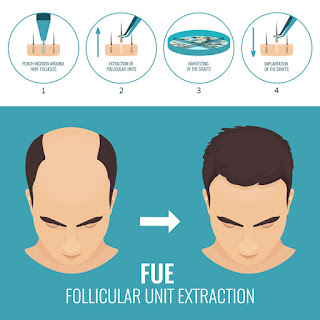Side hair Loss | Persona Hair
Many people experience hair loss for some time in their
life. While hair may start thinning or falling out for some people at an early
age, most often, people experience the condition later in adulthood as they
reach their 30s or 40s.
Hair loss can occur on your temples - the area on the side
of your head, behind your eyes and between your ears and forehead. This hair
loss can be the result of many conditions. The earlier you talk with a medical
professional, the better chance you have of reducing hair loss and even
reducing hair.
Symptoms of Side Hair Loss
Although people can lose up to 100 hairs per day through
normal shedding, thin hair is often one of the first symptoms of hair loss. You
can see the amount of hair loss in the shower or while brushing. Turning a hair
is also a sign of hair loss and can spread to temples.
Hair loss in your temples can result in widow braid, a
V-shaped hairline is often present in men, but it can also be experienced for
women.
Causes of side hair loss
There are many situations and practices that can result in
hair loss in your temples.
Androgenic alopecia is one of the most well-known reasons
for male pattern baldness. For men, this is known as male-pattern baldness This
kind of male pattern baldness is hereditary, and male pattern baldness over the
sanctuaries is frequently the main sign.
In women, the hair may be less dense as a result of
female-pattern baldness, sometimes allowing the scalp to be visible, but
usually not involving a receding hairline with men.
Other common causes of hair loss at temples include:
·
Hormonal changes during pregnancy
·
Tension
·
Tight hairstyles such as ponytails or cornos
(traction alopecia)
·
Side effects of some medicines
·
Smoking
·
Vitamin deficiency, such as vitamin D and B
vitamins
Female side hair loss
Female side hair loss is a type of hair loss that
affects women. The medical name for the condition is androgenic alopecia.
Although women may experience hair loss, it is not as
widespread in men as it manifests in women and differently.
In men whose hair falls, hair loss and bald spots develop.
Women with female side hair loss typically experience normal hair thinning,
which affects their hair volume.
In women, the first sign of female pattern baldness may be
an enlarged section or a feeling that the hair does not look as thick as usual.
Although the scalp may be visible, the hairline is usually not closed.
Hair loss is less in women than men, but it is still
frequent. Female pattern baldness increases with age, and less than 50 percent
of reliable female sources have a full head of hair for their entire lives.
The diagnosis
Your doctor will explain the cause of your hair loss based
on your medical history, the medications you take, your nutritional status,
your hair habits and physical examination. If your doctor suspects a fungal
infection of your scalp, he may take a hair sample for laboratory testing. A
blood test will be required if your doctor suspects a disease (such as lupus)
or thyroid problems, iron deficiency or sex-hormone imbalance.
Expected duration
Prolonged hair loss depends on the cause. For example, in
telogen effluvium, hair is usually lost from several weeks to months, but then
grows back over the next several months. When hair loss is a side effect of a
drug, hair growth usually becomes normal after the drug is discontinued. If you
are losing hair due to the offending hairdressing, hair loss usually stops
after changing to more natural styling, leaving traction alopecia, resulting in
years of pulling the hair back into tight braids. In tinea scalp infection, the
fungus that causes the problem should be treated for at least 6 to 12 weeks and
hair regrowth may be slowed. Early treatment is significant in avoiding
conceivable perpetual male pattern baldness. Both male and female pattern
baldness worsen over time, but can be treated.
How to prevent Side hair loss
Hair loss associated with genetics such as male or female
pattern baldness cannot be stopped, but there are steps by which you can reduce
hair loss.
Many prevention techniques and treatments focus more on
slowing down the hair loss process, as to prevent it altogether. Contains:
·
Avoid twisting and pulling hair.
·
Avoid using treatments that can damage hair,
such as hot curling iron.
·
Maintain a strategic distance from haircuts that
force your hair back firmly.
·
Take part in activities that reduce stress
levels.
·
Eat enough protein and omega-3 fatty acids.
·
On the off chance that you are being treated
with chemotherapy, demand a cooling top.
If you have already experienced hair loss in your temples,
there are treatment options available that have the potential to help regrow
hair.



Comments
Post a Comment